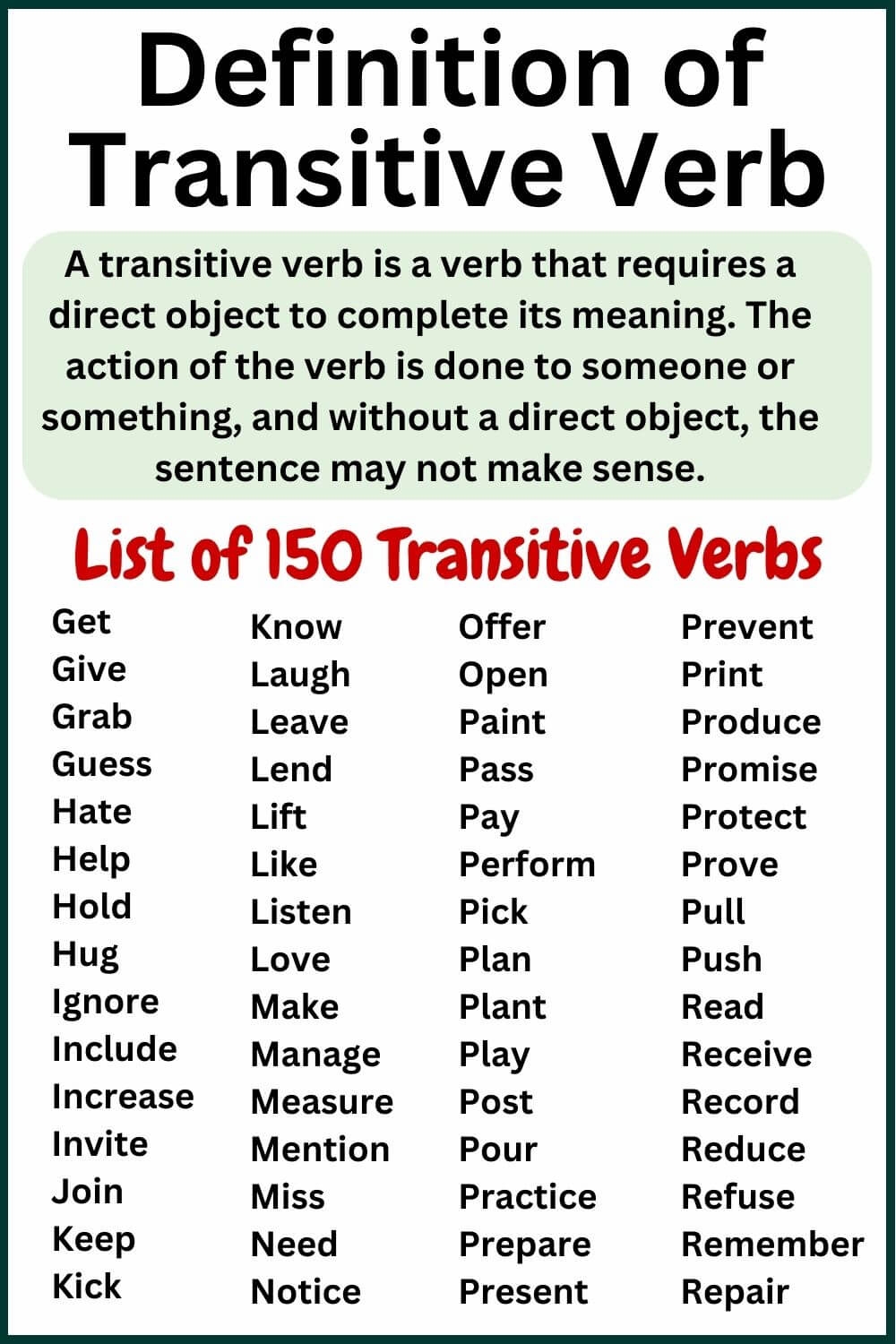Transitive verbs play a significant role in the English language as they help convey actions that require a direct object. Understanding transitive verbs is essential for constructing clear and concise sentences. In this article, we will explore the definition and usage of transitive verbs.
A transitive verb is a type of verb that requires a direct object to complete its meaning in a sentence. The direct object is the receiver of the action performed by the verb. Without a direct object, a transitive verb would not make sense or convey a complete thought. For example, in the sentence “She bought a new book,” the transitive verb “bought” requires a direct object “a new book” to complete the action.
Understanding Transitive Verbs
Transitive verbs are often used to express actions that directly affect someone or something. They answer the question “what” or “whom” after the verb in a sentence. In contrast, intransitive verbs do not require a direct object to complete their meaning. For example, in the sentence “He runs every morning,” the intransitive verb “runs” does not need a direct object to convey the action.
It is essential to distinguish transitive verbs from intransitive verbs to ensure correct sentence structure and clarity. Some verbs can function as both transitive and intransitive verbs, depending on their usage in a sentence. For example, the verb “eat” can be transitive when followed by a direct object (“She eats an apple”) or intransitive when used without a direct object (“She eats quickly”).
When using transitive verbs in sentences, it is crucial to identify the direct object that completes the action. Direct objects can be nouns, pronouns, or noun phrases that receive the action of the verb. Understanding the relationship between transitive verbs and direct objects helps create meaningful and coherent sentences.
In conclusion, transitive verbs are an essential component of English grammar that require a direct object to convey a complete thought. By recognizing transitive verbs and their usage in sentences, writers can effectively communicate actions and information to their readers. Practice identifying transitive verbs and direct objects to improve your writing skills and enhance the clarity of your sentences.
